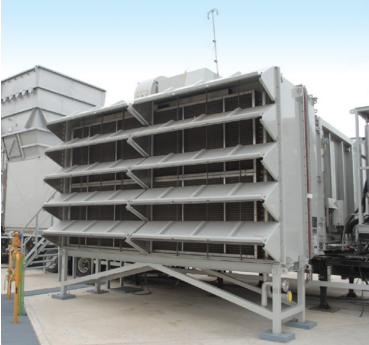The intake portion of a turbine system is the beginning of the entire unit, and the quality and design of the intake system greatly effects the efficiency and overall quality of the turbine system. The main job of an intake system is to provide clean, filtered air within a set range of parameters for a turbine generator to maximize efficiency while simultaneously protecting that same engine from harmful elements found in the environment.
The design of an intake system can vary depending on the environment of the turbine system. For instance, if the turbine system is going to be in an area with high amounts of dirt and debris then the intake system will have a larger than normal emphasis on filtration to make sure those particles do not make their way into the rest of the system. The standard design of an intake system will have rain hoods followed by a filter house, after the filter house there will be an inlet manifold which typically has noise reduction qualities and then transitions down to the axial flow compressor inlet. The distance above ground level and the opening of the intake can also vary based on environmental needs. Things such as screen/mesh opening covers for areas that have a concern of small animals attempting to enter the intake of a turbine system can be added to an intake system.
Turbine intake systems can also be manufactured with noise reduction qualities in mind which is an important step in meeting requirements set by a locations health and safety guidelines. Other features of an intake system can include anti-icing for extremely cold environments, or evaporative cooling systems for extremely hot environments which may be needed for optimum operation in certain climates.
The efficiency and quality of an entire turbine system relies heavily on the design and quality of the intake portion. Not having proper filtration within a turbines needed parameters can have an impact on performance or worse it can lead to premature failures throughout the entirety of the system.

